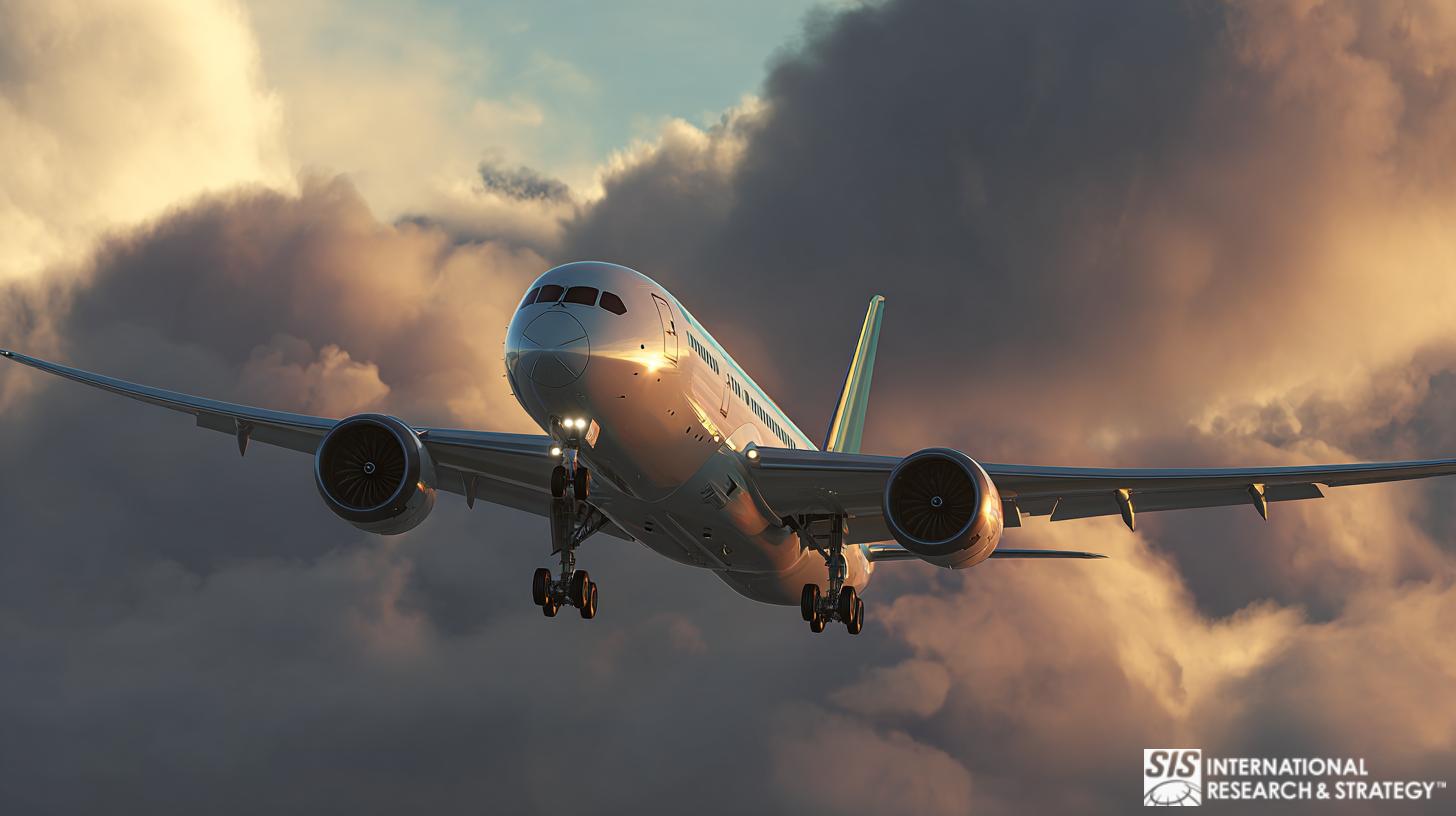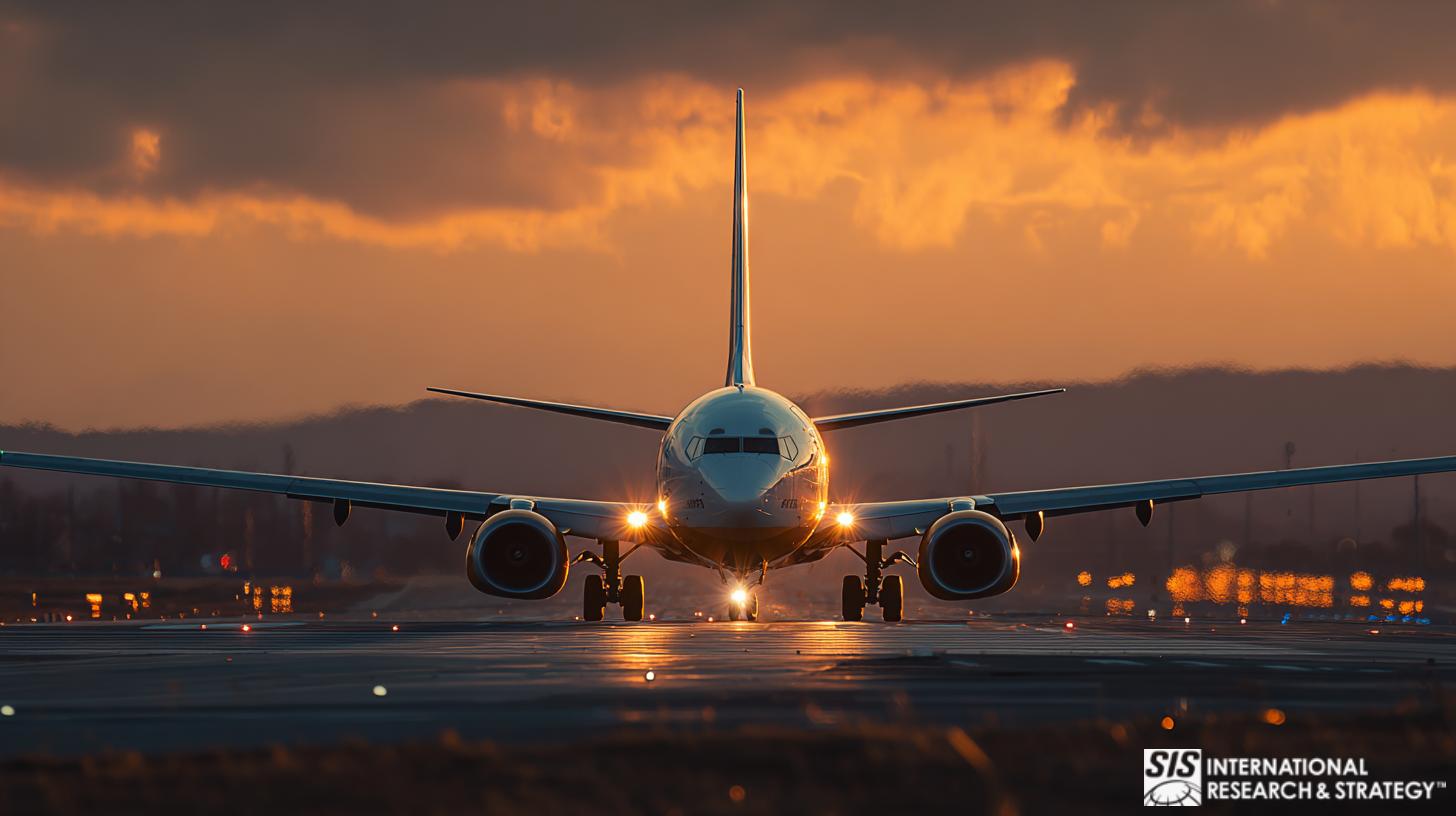
The aeronautics industry is a main contributor to national security, commerce, and transportation. It is considered as a technology driver that leads to spin-offs of advanced technology products and comprised of three major sectors: airframe, engine, and equipment.
The market is composed of civil aeronautics of aircraft used for domestic commerce and civilian air transport, and military aeronautics includes air arms for the military aviation of countries.
Mercado aeroespacial de Estados Unidos
Since World War II, U.S. aircraft, engines, and parts have dominated the domestic and foreign markets for subsonic transports, general aviation, commuter, and military aircraft. US technology and products are also the drivers for the development of global transportation infrastructure like airports and air traffic management systems.
Actualmente, la industria aeronáutica es el mayor contribuyente industrial positivo a la balanza comercial de los EE.UU., desempeña un papel vital en el mantenimiento de la seguridad y la comodidad de los viajes aéreos en todo el mundo y proporciona importantes contribuciones a la defensa de los intereses de los EE.UU., ya que ha volado la mayor parte del mundo. partes aisladas del mundo.

La compañía Boeing
The Boeing Company is one of the largest manufacturers of commercial jetliners and military aircraft. It designs and manufactures rotorcraft, electronic and defense systems, missiles, satellites, launch vehicles, and advanced information and communication systems, and operates Space Shuttle and International Space Station for NASA, and provides military and commercial airline support services. It operates in more than 90 countries around the world and is one of the largest U.S. exporters in terms of sales.
Boeing is headquartered in Chicago and employs more than 160,000 people across the United States and in 70 countries. Currently, it is expanding product lines and services developing more commercial airplanes, military platforms, defense systems, and the war fighter through network-centric operations; creating advanced technology solutions that reach across business units; e-enabling airplanes and providing connectivity on moving platforms; and arranging financing solutions for our customers.
El mercado aeroespacial europeo
The region is presently struggling to keep pace with the strong increase in mobility and demand. However, the region is the main competitor of the US in terms of air travel over medium and long-haul routes. EU states are now increasing their funding to support and fund research initiatives to meet market demands and grab potential opportunities in the industry.
Airbus SA
Airbus es un fabricante de aviones líder que ofrece líneas de productos que van desde el avión de pasajeros A318 de pasillo único y 100 asientos hasta el A380 de 525 asientos, el avión civil más grande en servicio.
Airbus se ha expandido al sector de los aviones de transporte militar con el elevador aéreo militar multifunción A400M, producido bajo la dirección de la compañía Airbus Military, que sustituye a las antiguas flotas de C-130 Hercules y C-160 Transall a partir de 2009. Además, aviones cisterna para -Las misiones de transporte y reabastecimiento de combustible en vuelo están disponibles en variantes de aviones derivados del A310 y A330.
Tecnologías emergentes
Las áreas de enfoque de investigación recientes en aeronáutica incluyen nanotecnología, pruebas y evaluación de desarrollo, guerra centrada en redes, sistemas inteligentes y transporte aéreo ambiental.
Sistemas de aeronaves y equipos con energía optimizada
Air craft technologies are related to the design and integration of energy-consuming Aircraft Equipment Systems (AES). These systems are located under the floor, inside wings, and behind panels, essentially ensuring performance, safety, and controllability.
Las nuevas configuraciones de aeronaves mejoran los componentes disponibles y la integración de estos sistemas para introducir posibilidades de mayor eficiencia en términos de lo siguiente:
- Control ambiental y todos los aspectos de la gestión térmica.
- Actuación de control de vuelo Protección contra hielo y lluvia.
- Tren de aterrizaje y frenado.
- Electrical, hydraulic, and pneumatic generation and distribution
- Generación de energía auxiliar y de emergencia.
- Sistema de combustible para aviones
- Soporte del motor
- Iluminación, cabina y agua/residuos.
Nanotecnología
Las áreas activas de investigación en la industria aeronáutica incluyen nanodispositivos y sistemas, nanoelectrónica, nanofabricación, nanomateriales, nanosensores y los aspectos ambientales, de salud y de seguridad de la nanotecnología. Las actividades de investigación actuales incluyen la capacidad de combinar múltiples disciplinas "nano" para crear aplicaciones nuevas y sinérgicas de la nanotecnología.
La Iniciativa Nacional de Nanotecnología de EE. UU. como un campo en el que la nanotecnología tiene el potencial de permitir una gran cantidad de innovación, particularmente en materiales/estructuras y bionanomateriales inteligentes en aeronáutica.
Transporte Aéreo Ambiental
La Iniciativa Tecnológica Conjunta Clean Sky reunirá a las partes interesadas europeas en I+D para el desarrollo de diseños, motores y sistemas de vehículos aéreos ecológicos para minimizar el impacto ambiental de los futuros sistemas de transporte aéreo.
Technologies will directly aim for the reduction of the amount of carbon dioxide (CO2) emitted by air transport, cutting specific emissions of nitrogen oxides (NOx) by 80% and decreasing noise levels. The targets reflect the Ultra Green High Level Target Concepts developed by the Advisory Council for Aeronautical Research in Europe (ACARE). Other focus areas include the reduction of soot, water vapour, and particulate emissions through alternative fuels; aircraft engine configurations, intelligent low-weight structures, improved aerodynamic efficiency, airport operations, and air traffic management as well as manufacturing and recycling processes.
El mercado aeroespacial de Asia
Relative to Europe and the Americas, Asia’s security situation is increasingly fluid. Emerging superpowers, weapons proliferation and nuclear tensions are key movements in the defense industry.
Increased nuclearization among Emerging Markets, particularly China, India, Pakistan, and Iran, has created geopolitical tensions and new demands for defense offerings. Meanwhile, political calls are growing in developed nations for collaborative efforts toward reduced nuclearization.
Conversely, weapons imports have grown dramatically in Southeast Asia over the past few years. Malaysia, Singapore and Indonesia are leading the growth with triple and double-digit growth in weapons imports.
In addition, defense budgets in Asia are on the rise. The rise is being led by regional tensions and a desire for more sophisticated technologies. Recently China has publicly announced its advanced capabilities to destroy ballistic missiles and demonstrated its defense capabilities in space.
Analysts expect increased demand from Asian governments. Asian companies may continue collaboration with established defense companies primarily in developed nations for cutting-edge weapons development.
Western aerospace and defense giants have emphasized their offerings of unmanned systems, aircraft, energy systems and cyber technology to, what industry giants consider one of their most important markets. While leadership in the defense industry is led by developed nations, industry observers are increasingly curious when Asia will be able to take a greater role in developing weaponry on a larger, more self-sufficient scale.
Problemas de la industria
Seguridad y Calidad de Vida
September 11, 2001 has shown the vulnerability of the air transportation system and the need for improved security. The long-term trend of growing numbers of commercial air operations demands a further reduction in the currently low rate of air transport accidents. Aviation safety and security pose numerous challenges to security personnel, operators, and aircraft designers. The public and aircrews must be protected both in the air and on the ground from danger and injury.
Personal
A serious problem facing the U.S. aeronautics industry is attracting, educating, and retaining the next generation of aeronautical engineers. The aerospace workforce is aging, and a significant number of people are nearing retirement.
La edad promedio de los trabajadores de producción es de 44 años en el sector comercial, 53 en defensa y 51 en la NASA. Además, la proporción de trabajadores de 30 años o menos se redujo en casi dos tercios, del 18 por ciento en 1987 al 6,4 por ciento en 1999. Existe una creciente preocupación de que el número actual de estudiantes en el “canal” educativo no sea suficiente para satisfacer las necesidades futuras de la industria aeronáutica.

